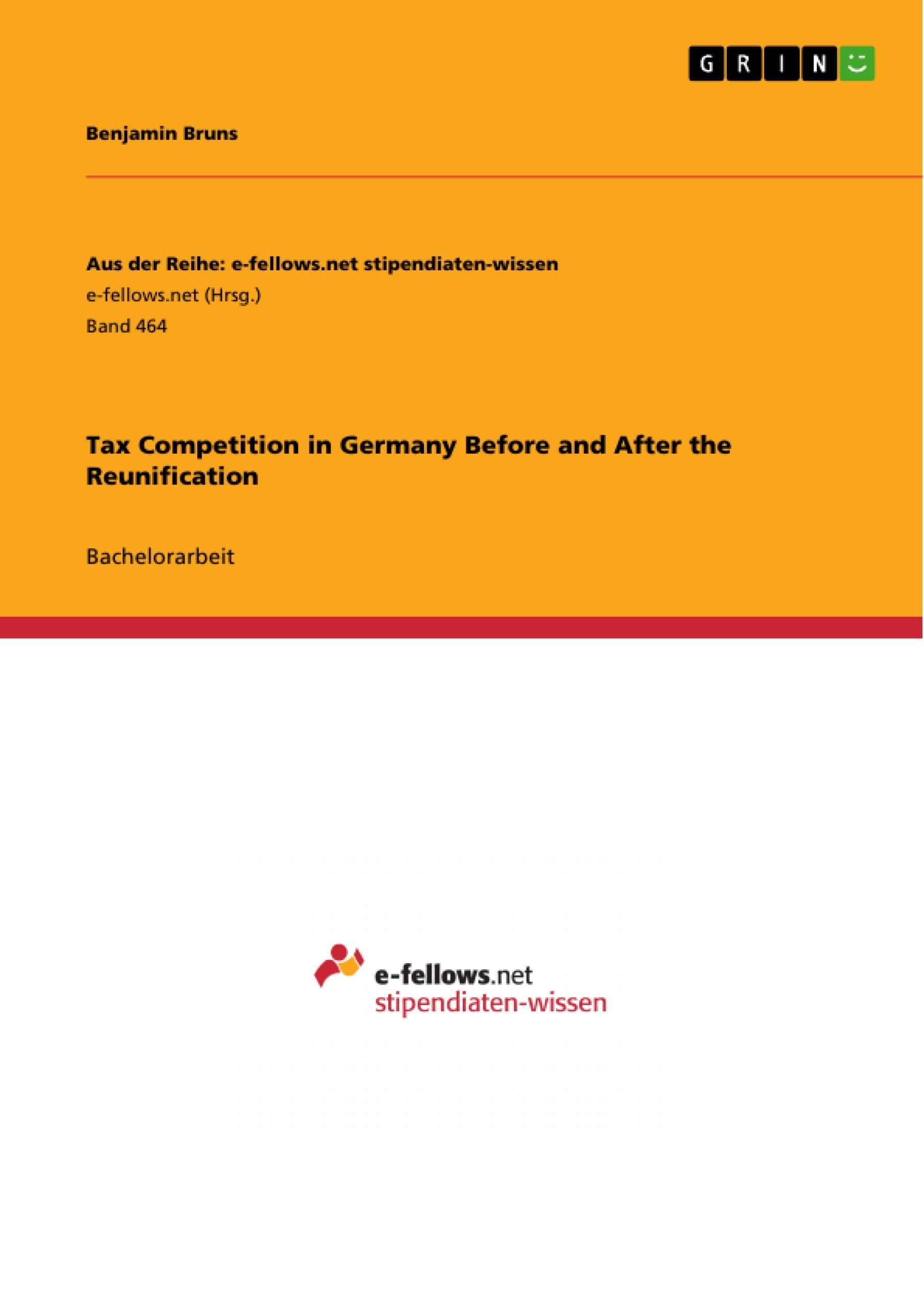This Bachelor thesis contains an empirical analysis of tax competition among German municipalities in Lower Saxony (Niedersachsen) and Bavaria (Bayern). The distinguishing feature of this paper is that it exploits the German reunification of 1989 as an exogenous shock to communities located close to the prior border. The panel dataset contains detailed information on state and community specific variables from 1982 to 2006. Moreover, it utilizes an instrumental variable estimation to identify the intensity of competition among municipalities conditional on their distance to the border.
Inhaltsverzeichnis
- Introduction
- Theoretical Considerations
- The Model
- German Reunification
- Institutional Background and Data Description
- German Federal System
- The Data
- Empirical Investigation
- Spatial Weighting Matrix
- Empirical Approach
- Results
- Summary and Conclusion
Zielsetzung und Themenschwerpunkte
Diese Bachelorarbeit analysiert das Vorhandensein und die ökonomische Relevanz des lokalen Steuerwettbewerbs in Deutschland. Sie untersucht insbesondere den Einfluss der deutschen Wiedervereinigung auf die Höhe der Steuersätze und die Intensität des strategischen Wettbewerbs zwischen Gemeinden. Die Arbeit verwendet ein großes Panel von Gemeinden in Bayern und Niedersachsen für den Zeitraum von 1982 bis 2007.
- Analyse des lokalen Steuerwettbewerbs in Deutschland
- Bewertung der ökonomischen Bedeutung des Steuerwettbewerbs
- Untersuchung des Einflusses der deutschen Wiedervereinigung
- Anwendung eines ökonometrischen Modells zur Identifizierung von räumlichen und zeitlichen Mustern in den Steuersätzen
- Bewertung der Auswirkungen der Wiedervereinigung auf die strategische Interaktion zwischen Gemeinden
Zusammenfassung der Kapitel
- Introduction: Die Einführung beleuchtet die Bedeutung von strategischer Interaktion zwischen Regierungen im Bereich der öffentlichen Finanzwirtschaft, insbesondere im Kontext von Steuerwettbewerb. Sie stellt die Relevanz des Themas vor und gibt einen Überblick über die relevanten Forschungsliteratur.
- Theoretical Considerations: Dieses Kapitel stellt das grundlegende Modell des Steuerwettbewerbs vor, das von Zodrow und Mieszkowski (1986) entwickelt wurde. Es behandelt die Auswirkungen der deutschen Wiedervereinigung auf das Modell und liefert eine theoretische Grundlage für die empirische Untersuchung.
- Institutional Background and Data Description: Dieses Kapitel beschreibt den institutionellen Rahmen des deutschen Föderalismus und die Daten, die für die empirische Untersuchung verwendet werden. Es beleuchtet die Besonderheiten des deutschen Steuersystems und die relevanten Datenquellen.
- Empirical Investigation: Dieses Kapitel präsentiert die empirischen Ergebnisse der Untersuchung. Es beschreibt die Methode der räumlichen Modellierung, die zur Identifizierung von strategischen Interaktionen verwendet wird, und analysiert die Ergebnisse der Regressionen.
Schlüsselwörter
Steuerwettbewerb, lokale Steuern, strategische Interaktion, deutsche Wiedervereinigung, räumliche Modellierung, ökonometrische Analyse, Gemeinden, Bayern, Niedersachsen, Business Tax Rate, Steuersätze, Föderalismus, öffentliche Finanzwirtschaft.
- Arbeit zitieren
- Benjamin Bruns (Autor:in), 2011, Tax Competition in Germany Before and After the Reunification, München, GRIN Verlag, https://www.grin.com/document/196949



